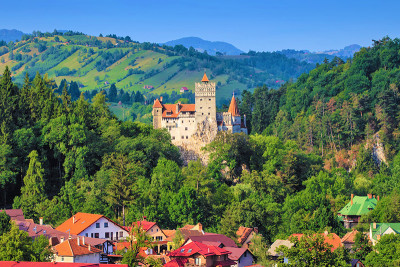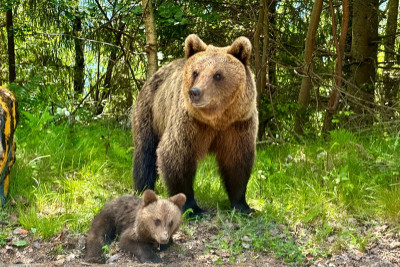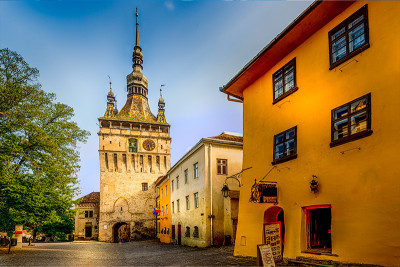So, you’re a tourist planning a trip to Romania, but you don’t want to get caught up in all the tourist traps, right? Of course, the main historical spots and museums that are most often visited, they are popular for a reason – they are great spots to visit! However, you can see some amazing sites in Romania while avoiding the rest of the tourists.
You just have to go to some of the less-publicized places, or the places that the Romanians seek when they go on vacation. Read on to learn about the most slept-on attractions in Romania, some of the best hidden gems!
1. The Living Fires In Buzau County
Located just 55 kilometers from the city of Buzau are the Living Fires. The Living Fires is a natural phenomenon where endless fires come up from the ground. The fires to occasionally go out, but they are formed from natural gas that rises from the cracks on the earth. When the fires do go out, locals simply light them back up. The flames can rise as high as 100 centimeters, which is over 3 feet high!
2. The Mud Volcanoes
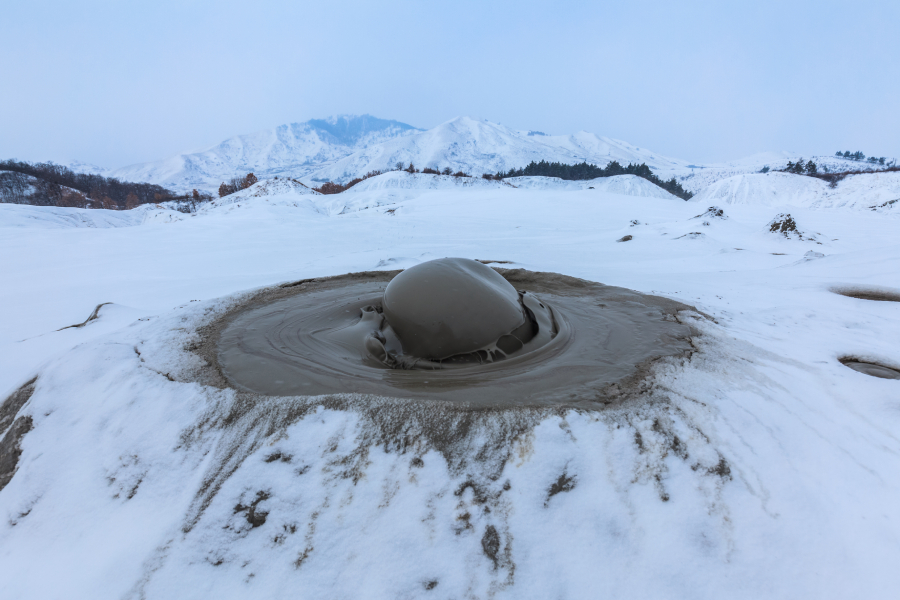
This is another one in Buzau County: the Berca Mud Volcanoes. These are active volcanoes that erupt like any other, but instead of spitting out lava, they spit out mud! What makes this so picturesque is that there is not any vegetation nearby, and the mud creates cracks and craters into the ground, making it almost look like you are walking on the moon. And if you go around sunset or sunrise, these volcanoes are absolutely spectacular!
3. The Church Under The Belis Lake
This Roman Catholic church is found in Transylvania and was built in 1913. The story goes that at some point during the communist regime, the town was alerted to a flood the church was evacuated. As much as could be removed – icons, chandeliers, etc. – was removed, and the townspeople left. The area did flood, but the church still stands. Even though the altitude of Belis is 1000 meters, the Church is still underwater most of the year. However, the foundation was so strong that it still stands today. Even more impressive is that the wall paintings and frescoes still remain intact.
4. The Merry Cemetery In Maramures County
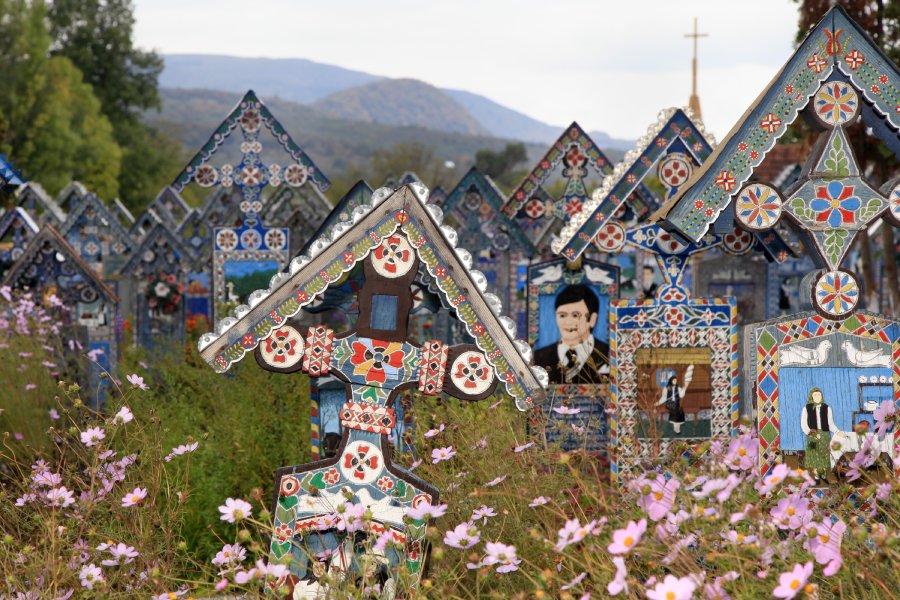
Actually, the Merry Cemetery has been gaining in popularity recently, but it still is not super well known, and it is a super cool spot, so we are keeping it on this list! All the tombstones at the Merry Cemetery are decorated colorfully and have poetry or other writing describing and celebrating the life of each person buried there. It is believed that Dacian culture viewed death as a joyful moment, as the person passes from this life of suffering to one filled with peace and happiness.
5. The Red Lake And Red River In Harghita County
Alright, despite the names, the Red Lake and Red River are not always red, but they do sometimes turn this color! This is due to the crossing iron oxides and hydroxides that react to create a natural red color. The Red Lake is actually a someone new lake that was formed naturally when part of a mountain fell. It is in the Hasmasu Mare Mountains. In the parts where the water is not red, the waters are dark and ominous, but yet still strikingly beautiful!
6. The Fagaras Fortress
This fortress is one of the defining monuments of Fagaras City. It is one of the biggest and best preserved medieval fortresses in all of Europe. It was built in the 1500s over the ruins of a castle that has been destroyed by a fire. There are two walls that surround the fortress, proving eight meters of thick protection. What is interesting is that the fortress never has a successful attack on it, but it did have an eventual downfall: treason from within. Today, the Fortress is a museum that you can visit and it is also the location of the annual Murmur Music Festival. The Festival brings together electronic, deep house and more, and also has plenty of good local foods, fashion, and art!
7. The Mysterious Living Stones
The stones of Costesti village, located in southern Romania, are actually living! Well, perhaps they are not really living, but they are called living stones because of their strange shapes and sizes, and because they move. These stones are called “trovants” and they secrete cement, making them appear as if they are growing. They normally are able to grow after a heavy rain. There are many myths about these stones too, so if you have the chance to visit, be sure to ask the locals about the stories of the stones!
8. The Seven Ladders Canyon
Located just south of Brasov, the Seven Ladders Canyon is a mountainous canyon formed by the Sapte Scari Brook. It is called the Seven Ladders because it has seven waterfalls, with the tallest one being 35 meters (115 feet) high! You can zipline your way to the canyon, or take an easy 1-hour hike. If you are heading up to Brasov by car, this is an easy stop you can take on the way!
9. The Polvragi Cave
Located in central Romania, at the opening of the Oltetului Canyon, is the Polvragi Cave. This cave is gorgeous on the inside and out. On the inside, it is made out of Jurassic limestone and the opening into the earth is huge, making it easy to walk through. Outside the cave is the beautiful landscape of the Oltet valley. All in all, this is a definitely worth a visit!
10. The Bicaz Gorge
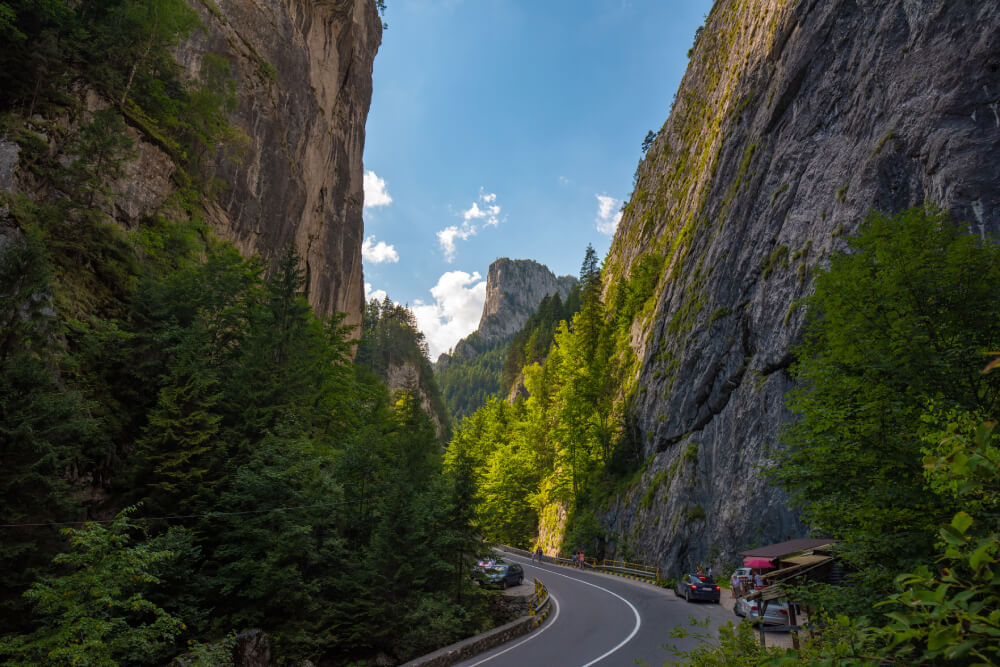
We saved the best for last: the Bicaz Gorge (known in Romania as the Cheile Bicazului). Located in the north-central part of the country, this is one of the most beautiful gorges in Romania. Just driving through the gorge is so picturesque. It was carved out by the Bicaz River and allows you to pass from Moldova to Transylvania. The roads are narrow, the cliffs are high, and the views are stunning.
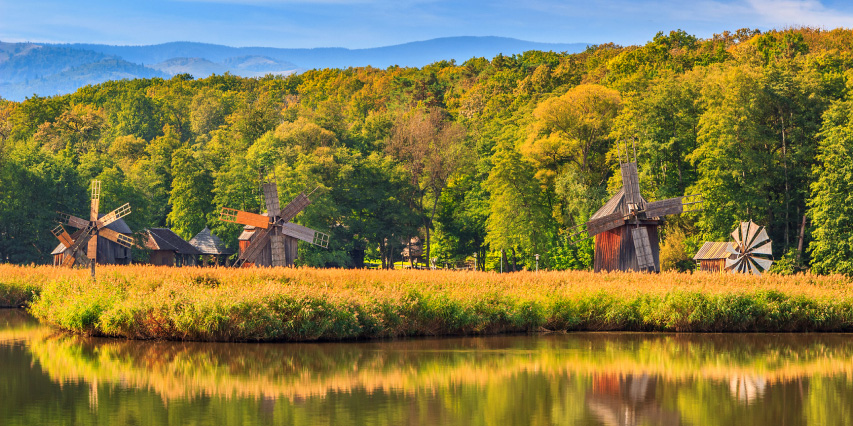
 ES
ES
 IT
IT
 DE
DE
 FR
FR
